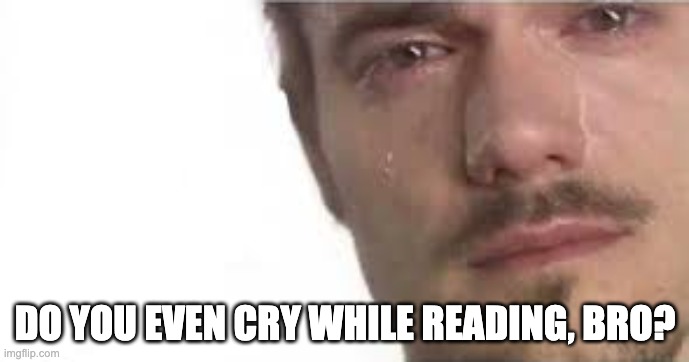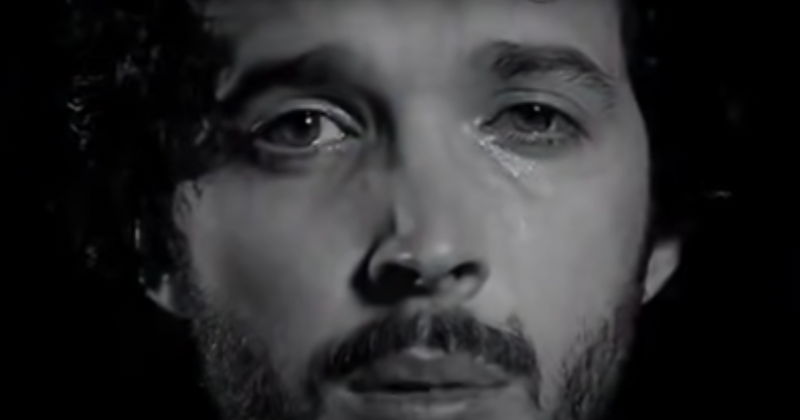A brief cultural history of crying while reading.
In the olden days, the popular crowd were devouring Pamela, and watching Marianne Dashwood getting teary over a sonnet (sense before sensibility)—the beginning of what became known as the “sentimental” novel, especially popular for and by among females in the 18th and 19th centuries, though traceable to 17th century poets.
T.S. Eliot argued that 16th and 17th century poets differed in that the latter were defined by a “dissociation of sensibility,” in the manner that their predecessors simply totted down the smells and sights of a given moment while “the (newer) poets revolted against the ratiocinative, the descriptive; they thought and felt by fits, unbalanced; they reflected.” They were “engaged in the task of trying to find the verbal equivalent for states of mind and feeling.”
In other words, they set out to write big feelings using ~technique~.
This was the beginning of sentimentalism, which proved very popular with audiences. In 2014, Pelagia Horgan reported a snippet of Richard Darnton’s accounting of the public response to the 1748 novel Clarissa:
“I verily believe I have shed a pint of tears,” one of Samuel Richardson’s admirers, Lady Bradshaigh, wrote to him.
The tears were a form of praise. The femaleness of response, though, became a negative.
As paraphrased in The Norton Anthology of Theory and Criticism, Jane Tompkins wrote in the 1980s that that “nineteenth century American sentimental novels were initially received positively but later devalued because of masculinist expectations.”
In the non-dialectical world, audiences were reading the moment where Beth departs Little Women, too good for this lousy world, distracted by the need to swallow their own tonsils, while critics argued that the domestic nature of the novel was limiting for women (Kate Beaird Meyers pushed back on this notion in the 1980s; as a realist novel that gave us Jo March, I’m sure you agree with her that it did not “glorify domesticity” nor traffic in unearned cries).
The challenge for authors going forward was to attempt to thread the needle of sentimentalism while retaining the heft of Quality.
As T.S. Eliot wrote of death, “I see the eyes but not the tears / This is my affliction.” Agh!
From time to time after that, books could be counted on to occasionally draw out a tear (Goodnight Mister Tom, Bridge to Terabithia, White Fang, Where the Red Fern Grows, Marley and Me), and were not always a female affair—why else the chonking up of bestseller lists with sports biographies that routinely bring men to tears?
We had Crying John Boehner keeping things flowing in the Senate chamber in the mid-2010s when things turned much more upsetting with two major publishing events: The 2014 publication of John Green’s sicklit-romance-nasal-cannulae bestseller The Fault in Our Stars, and the 2015 arrival of Hanya Hanigahara’s A Little Life, the cover of which looks basically like this:

It was a novel that subjected its hero, Jude, to nearly unimaginable abuse that was ongoing at the point where I gave up, two-thirds of the way through.
The book ushered in a new era of posting almost exclusively female cry faces on social media, captured in the 2015 Thought Catalog article, “Why Hanya Yanagihara’s A Little Life Makes Us Weep.” In this cultural touchstone, Chris Lavergne wrote that “People speak of having panic attacks while reading it, of crying uncontrollably, and of being left physically exhausted by the plot’s machinations.”
From there, things rolled steadily into the realm of the trauma plot—a kind of anti-intellectual emotional porn pointed at release—among which I count Charlotte McConaughy’s Once There Were Wolves, which made others cry but gave me emotional hives.
That evolved into BookTok, where the “girl crying while reading book” category currently has almost 10 million views—a modern-day descendent of Lady Bradshaigh.
Books that will make you cry are frequently recommended by celebrity book clubs like those run by Reese Witherspoon and Oprah, female tastemakers for a publishing audience that skews female (especially for fiction) and isn’t afraid to cry. There has been an accompanying push for “openness” around “mental health” that arguably does something different than John Milton’s poetry in Eliot’s critical appreciation—crying with or without the sublime.
A 2021 New York Times article “How Crying on TikTok Sells Books” reported that “many Barnes & Noble locations around the United States have set up BookTok tables displaying titles like “They Both Die at the End.” The crying, for the merchanizers, is the point.
I am not a trend forecaster, but I’m willing to bet that a table of “Why Did You Cry More Over the Dog In This Book Than Over Your Own Grandparents Dying?” titles would sell like hotcakes.
This led a splinter faction to ask on Reddit, “do people actually cry when reading books?“: “I mean, it didn’t actually happen, so what is there to be sad about?” wrote the poster of the concept of fiction moving its consumers. The replies can be summed up with the ^above meme, but are really as subjective as those of 18th century audiences regarding whether the crying is earned or frivolous.
Which brings us to today. Crying Clubs, originating in Japan, are on the rise, along with YouTube tutorials on how to cry. Perhaps it is the new ASMR! Men, I note, are learning how to cry. Can I suggest they put Pamela next on their list?
If you think you see me crying while reading, know that I’ve been cutting onions. I’m making a lasgna, for one.
Do you even cry, bro?





